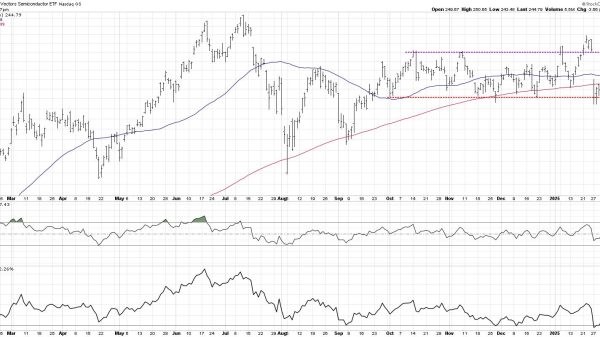Charles Silver

One of the odder changes the Senate made to the House of Representatives’ version of the so-called “One Big Beautiful Bill” was Sen. Thom Tillis’s (R‑NC) insertion of a provision that will put commercial litigation funders out of business by subjecting them to absurd taxes. The provision won’t reduce the deficit, fix the health care system, or address any other pressing need, so what’s the point of adding it
Because politicians are great at hiding their motivations, I asked a friend in the funding industry what he thinks Senator Tillis is up to. He sees the tax provision as a gift to big businesses that want to protect themselves from commercial suits brought by smaller ones. When small businesses accuse big ones of infringing their patents, conspiring to violate the antitrust laws, or engaging in other wrongdoing, they often need help financing these undertakings, which may cost tens of millions of dollars.
Commercial litigation funders provide the support these companies need by advancing money on a non-recourse basis, meaning that small businesses only have to repay the debt from their winnings. If they lose in court, they are off the hook, just like plaintiffs whose lawyers work on contingency. My friend thinks that Tillis hopes to prevent small businesses from suing large ones by depriving them of access to litigation funders.
That isn’t what Senator Tillis says, of course. He contends that “predatory” litigation funders prolong litigation, increase costs, encourage frivolous lawsuits, and treat the US court system “like a casino.” These are the same trumped-up charges that proponents of tort reform have lodged against plaintiffs’ attorneys for decades.
In the tort reform debate, interest groups exaggerated the frequency of frivolous lawsuits, misled Americans about trends in jury verdicts and payouts, and falsely claimed that restricting lawsuits would reduce health care spending by hundreds of billions of dollars while increasing patients’ access to physicians. Using large datasets, empirical researchers like me disproved these assertions repeatedly. For some examples, see here, here, and here. Our findings didn’t stop political partisans from sticking to their talking points, but they demonstrate the need to scrutinize tort reformers’ assertions with care.
The senator’s claims are also fabrications. Litigation funding isn’t “predatory.” It is a win-win contractual arrangement that shifts costs from plaintiffs and their law firms to funders that can bear them more easily. As I explained here, it resembles the coverage of defense costs that liability insurance provides. Insurers underwrite litigation on the defense side; funders underwrite it on the plaintiffs’ side. If you’re happy with the former, you should be happy with the latter.
Funding doesn’t delay justice, either. Most lawsuits end in settlements, and settlements can occur anytime, whether or not funders are involved. The real cause of the delay is disagreement. Plaintiffs want more than the defendants and their insurers are willing to pay. Bringing the parties together often requires exchanging information via discovery, which is expensive and slow. Funders aren’t to blame for that.
Litigation funding doesn’t treat courts like gambling parlors either. All lawsuits require funding. The only question is where the dollars will come from. In commercial cases filed by small businesses, the primary sources had long been the businesses themselves and a small number of entrepreneurial law firms that could afford to deliver services on contingency. The firms covered expenses by drawing upon their own resources or lines of credit issued by banks. These were expensive sources. They were also severely limited.
Today, the infant industry of commercial litigation funders eases the burden by offering better terms and increasing the supply of capital. Because funders maintain portfolios, they can also underwrite cases that are too risky for banks to touch.
Tillis’s allegation that litigation funding encourages frivolous litigation also fails to persuade. Because plaintiffs’ attorneys only get paid when they win, they prefer stronger cases to weaker ones. Bad behavior can occur, but defendants can be relied upon to bring these instances to the attention of judges, who are quite willing to lower the boom on offenders.
The main point in Tillis’s favor is that lawsuits are often expensive. No one denies this, and everyone is constantly looking for innovations that will make litigation cheaper. Success has been hard to come by. We may simply have to accept the fact that sorting out the merits of claims is often difficult. But litigation funders don’t make matters worse. They just make the cost burden easier for plaintiffs and their lawyers to carry.
Litigation funding is a market adaptation. Like the contingent fee, it is the key to the courthouse door for small businesses that cannot afford to shoulder the costs and risks that modern commercial litigation entails. By leveling the playing field, litigation funding should have beneficial consequences. Settlements should more closely reflect the merits of claims because defendants and their insurers will be less able to outspend plaintiffs or outlast them. Potential wrongdoers should also take greater care to avoid harming people, for fear of being held accountable for damages in court. As risks and costs are shifted to funders, lawyers’ fees may also decline.
Few Americans alive today know that liability insurance was highly controversial when it first became available in this country in the late 1800s. Now, it is taken for granted, insurers are known as the tort system’s bankers, and a serious concern is that many wrongdoers carry too little insurance. Litigation funding is new, and its potential to enable small businesses to go toe-to-toe with big ones makes it controversial. That’s why big businesses and the politicians in their thrall want to kill it in its infancy.
But the case for drowning the baby hasn’t been made, and I doubt that it will be. What persuasive complaint can be lodged against an industry that helps businesses obtain needed capital on attractive terms from sophisticated investors? I can’t think of one.
Charles Silver is a professor at the University of Texas at Austin School of Law and an adjunct scholar at the Cato Institute.






















